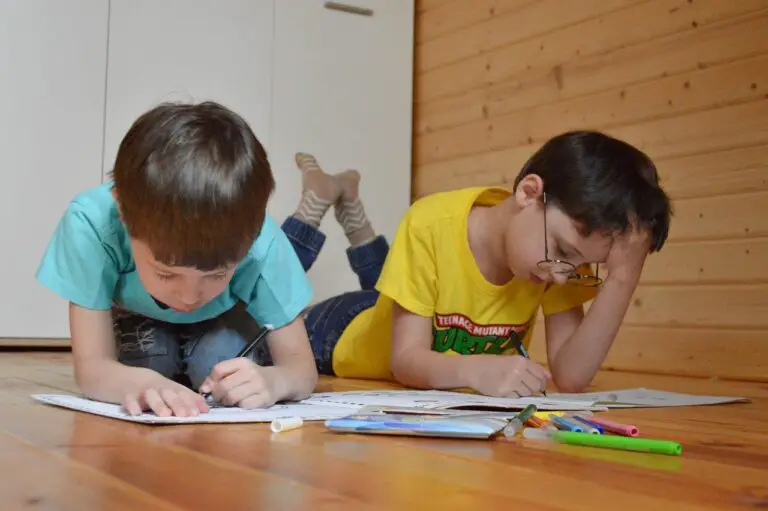
Every teacher who gives private classes will come across a student who refuses to take part. I certainly have, on many occasions. Whether they’re too shy, in a bad mood, or just don’t want to be there, these classes seem to last an eternity and have the teacher doubting their own ability.
If a private EFL/ESL student refuses to participate, find out why, then adapt the class to their needs. Help them feel comfortable and confident. Build trust and allow them agency. Give plenty of praise and provide stimulating activities which have them looking forward to your sessions.
Diagnosing and solving the problem can be a challenge, and each student has their unique personality to contend with. But don’t fret, there are several things you can try to remedy the situation.
Students not participating
Private classes, either one-to-one or with small groups, online or in-person, rely on personal relationships. Compared to normal school lessons, they’re more intense and direct, with students expected to take part throughout. There’s no hiding in the back row.
For most students, this doesn’t prove a problem. They relish the increased attention and develop their English skills quickly.
However, for some, participation is challenging. I’ve seen it with individuals both on their own and in small groups, and it’s one of the hardest obstacles to overcome.

From the student’s point of view, the class can be boring, controlling, or stressful. Their mood transmits throughout the class. In groups, the other students pick up on the lack of participation and may start feeling the same way.
As a teacher, knowing you aren’t delivering a high-quality class is frustrating, and you end up dreading lessons.
Most of the time, you can turn things around. A few strategies and perspectives go a long way toward engaging a reluctant student.
Diagnosing why they won’t take part
There are several reasons why students might refuse to participate in an EFL/ESL class. Finding out which applies to your student is key to enacting a suitable solution. Here are three common reasons.
- The student lacks confidence in English, or is shy. They won’t open up.
- Parents or their employer forces them to attend.
- They have an issue with the teacher-student dynamic – they don’t like being told what to do.
There are other possible situations, and you may find multiple apply to your student.
So how do you figure it out? Well, a lot of it comes from observation of their behaviour during class – social cues like body language and tone of voice are good indications.
You could also ask them directly. The answer to “whose idea was it for you to have English classes?” might tell you why they seem so disinterested. Or get them to rate their level of English from one to ten. If it’s significantly lower than you estimate, it may be a confidence issue.
Ask for feedback. After certain activities, gently probe them for their opinions on how things went, and if they enjoyed it or not. Young children may not answer this kind of question in detail, so monitor their mood and body language..
If all that fails, try to chat with their parent or employer. You risk the student getting punished for their lack of participation, but it could provide you with vital information.
Build an atmosphere of trust and confidence
With such direct interactions in private classes, trust is crucial. This is true for all students, but especially those who lack confidence in their English, or are shy. Anxiety crushes participation. Be it from fear of failure, concerns about seeming stupid, or being worried about school or work, it’s a shell which is hard to break.

However, if you build an atmosphere in which students feel safe and unpressured, they will start to open up. To create this environment:
- Praise. Give your students genuine positive feedback when they speak up and participate. It doesn’t have to be lavish. Sometimes a quick thumbs up is enough. Just let them know they’re doing well.
- Avoid over-correcting. While it may be tempting to perfect your student’s English, it can be disheartening when half the words they say need changing. With extra shy students, I only correct them when they repeat a simple mistake two or three times.
- Never put on the pressure. One thing I find is a sure way to send a student retreating into their shell is to force them to repeat a sentence I have corrected. I understand repetition of the correct form aids learning. But the physical, cringing reaction it provokes in shy students makes me shudder and associates a negative emotion with my classes. The same applies to making them stand up and present something.
- Zero tolerance for mockery. If I’m in a group situation and someone laughs at a mistake, I’ll come down hard on that person. It’s simple. If a student is afraid of mockery for trying something new, they won’t try anything.
The idea with these steps is to create a warm, safe space.
Imagine you’re at an adventure park on the high ropes – you have to walk between two trees at a height of ten metres, with only a couple of metal wires to hold on to. Without safety equipment, I’m staying put. But get me in a harness with a bundle of safety ropes and an instructor to guide me through… I’ll be across in no time.
Give the students agency
The traditional power dynamic in classrooms across the world has the teacher in control and the students following commands. It’s debatable if that works with a big class, but with individuals or a small group, it’s backwards.
Students who feel they have agency will take part. It’s as easy as that. Well, not quite. Giving your student complete control of the class will probably end up with them playing video games while you provide a half-hearted commentary in English.
But you can still give them choices. The amount of choice you can give depends on the requirements of the class. If there’s specific content you have to get through, the choice can be as limited as “do you want to do vocabulary first, or grammar?”
If you have more freedom, let them choose what type of activities you do. There might be some negotiation needed, but give them what they want at least half the time and they’ll be more willing to do things you suggest.
You may have spent half your weekend planning a fantastic class, only for them to decide they want to moan about their school teacher/boss/older sister for the entire class. Let them. You’ve still got the lesson planned for next time.
As mentioned earlier, be careful not to give them too much. Set firm boundaries and non-negotiables. In one of my classes with a group of teenage boys, they ask me every lesson if we can play FIFA. I respect their determination, but it won’t happen.
Another way of removing the teacher-student control dynamic is to make clear they won’t be graded/assessed (unless you can’t avoid it).
With the teacher in control of their grade, you’d think students would participate more. Although it may seem counterintuitive, I’ve found students engage less when their grade is on the line. I think it’s because it’s too much like traditional school.
Here’s another analogy. Imagine you’re with a child who’s having their first experience on a trampoline. You might be tempted to lecture them on safety and teach them the correct bouncing technique.
Mistake.
Let them jump around as much as they like and enjoy themselves. You can join in and show them some fun things to do. If they near the edge, or jumping dangerously, step in and stop them. And if you’ve got a safety net around the trampoline, so much the better.
Provide interesting lessons which out-compete other distractions
Grammar worksheets. Long reading comprehensions. Endless lists of tedious vocabulary.
Can you blame students for not wanting to take part?
Now, you may design your lessons to be much more exciting than that, but still can’t get your students to participate. No matter what you try, they never bite. Maybe it’s time to switch things up.

Most people like playing games. They may be reluctant at first, but stick with it for a while and see if they join in. If not, abandon the game and change the energy level.
Energy level refers to the excitement and physical movement of a game or activity. Adults and shy teenagers often prefer low energy activities while children like the energy high.
Find your students’ preferred level, but when they’re reluctant, shift it up or down a notch.
Examples of high energy activities are Swat the Word and Hot Potato. Low energy games include Say and Draw, Folding Stories, and Memory Chains.
If you have low-level students, check out my list of 9 EFL/ESL Speaking Games & Activities Perfect for Beginners, or for students with a good level – 9 EFL/ESL Games and Activities for Intermediate Learners.
Games aren’t everything, though. Sometimes, an intriguing challenge may prove more enticing, especially for those students who consider themselves above the silliness of games. Be creative, learn what makes your student tick, and dig in deep.
Personally, I love role-playing games. They’re adaptable, get students invested, and allow for a variety of positive experiences that will have even the most reluctant of students begging for more. Read my article to find out Why All EFL/ESL Teachers Should Use Role Play Activities
Apply gamification techniques carefully
Gamification refers to the application of game-like elements in a learning environment. For example, points systems, leaderboards, badges, progress bars, etc.

Giving rewards can be a tempting strategy. Bribing them with the promise of points or even physical prizes seems like a foolproof plan. And it works for a while. But long term, think about how such behaviouristic approaches affect student agency.
If they depend on your word to get the reward, they’ll soon grow disillusioned. Just watch them do the bare minimum to earn the points and moan when you deny them.
Instead, use gamification subtly. Maybe create a progress bar that shows how far through the prescribed content you’ve gone, or give them unexpected, unconditional rewards every now and then, when they go above and beyond the norm.
For my in-depth look at gamification, read Gamification in EFL/ESL: Guide to motivating students.
Conclusion – personal relationships are everything
Ultimately, to get your student to take part, you need to develop a good relationship with them. They need to trust you, feel on a level platform, and enjoy spending time in your classes. If you show them you care, they’ll respond accordingly. Even if it takes a while.
Be careful, though. You’re not trying to be their friend – you still need limits and a level of professionalism.

It may take months or even longer for you to make a breakthrough. One student I had a few years ago would hardly speak to me, no matter what I tried to engage with her. It took a year to win her over. But when it did, the level of trust and enjoyment we shared from made it a highlight of my week.
Having said all this, you can’t always win. There are some situations when, for whatever reason, you can’t get the student to participate. Don’t take it personally. Students have all sorts of reasons for not wishing to take part, and some of them are beyond your control.
Sometimes you have to call it quits. As long as you know you’ve tried everything, given the student all the opportunities to get involved, if it’s not working for either of you, there’s no shame in suggesting they find a new teacher.
Hopefully, it won’t come to that. With these strategies in your arsenal, you’re well on your way to turning those difficult lessons into healthy, prospering classes. Remember, give them trust, agency and excitement and participation will never be a problem again.








